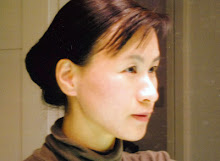
Today, I visited Kew Gardens which was registered as a wold heritage in 2003. This pictured glass house is the largest in the world.
I wanted to sketch cherry blossoms but I found its season hasn't arrived yet.
All greens and flowers (especially orchid) are wonderful. But I can't help remember that they can be alive only inside of the green house.
I was very much impressed by the botanical painting's collection.

This Pagoda seems important land-mark in Kew Garden. There was a Shinto-gate of Japan close to this Pagoda. Its stone garden was beautiful as that of Kyoto.

I have seen many kind of birds in Kew Gardens: peacock, hens, geese, doves etc.
 I enjoyed the lovely carpets of crocuses instead.
I enjoyed the lovely carpets of crocuses instead.Minka house's bamboo garden was nice too.
I remember, my grand parent's house was decorated like this when I was a child. It was a beautiful day. I will come back to this garden about the time cherry trees are in their full bloom.























